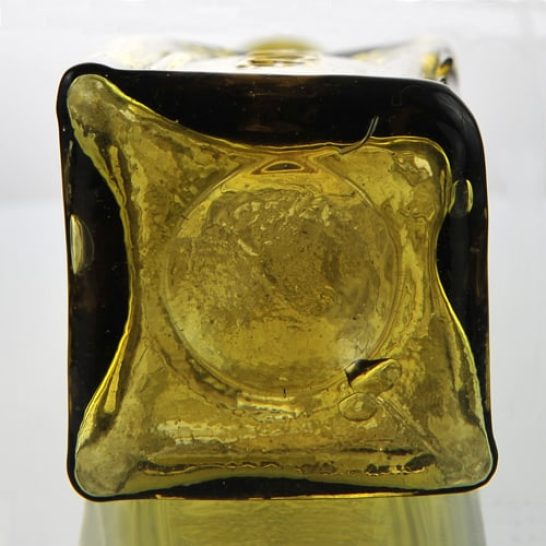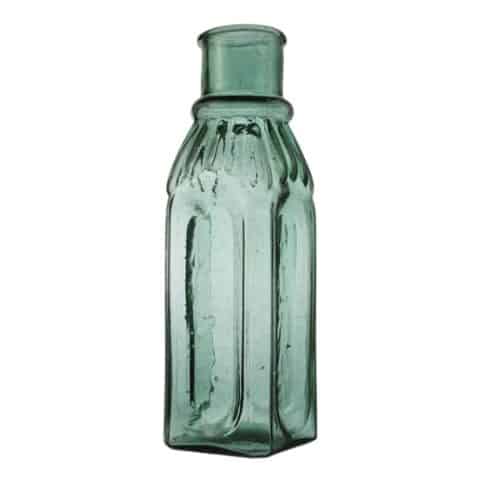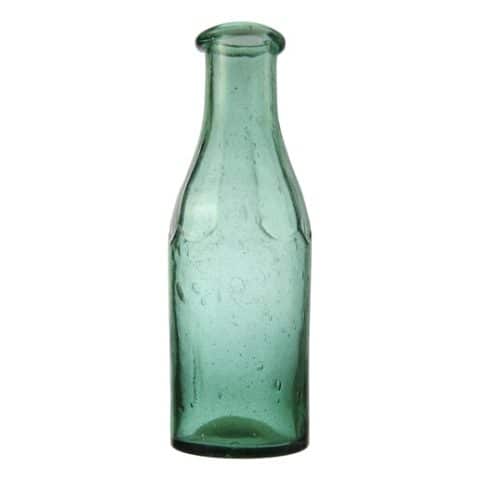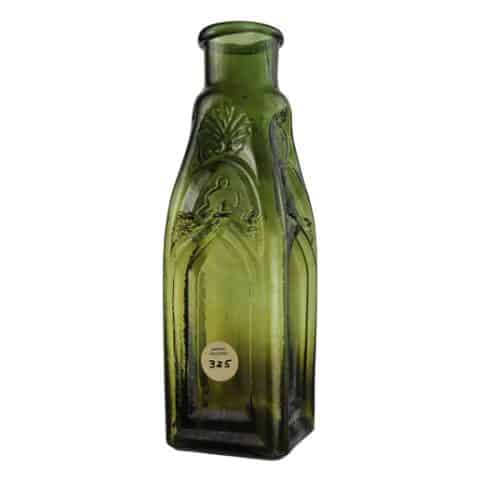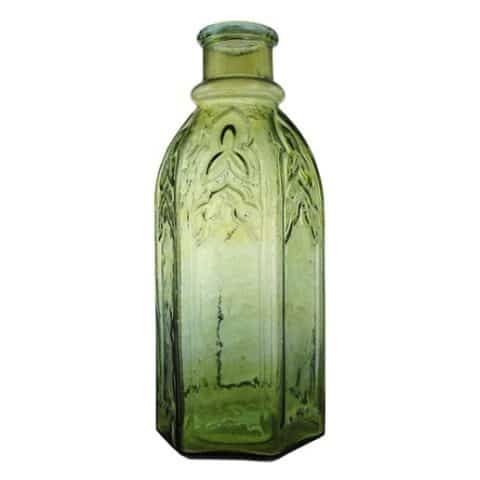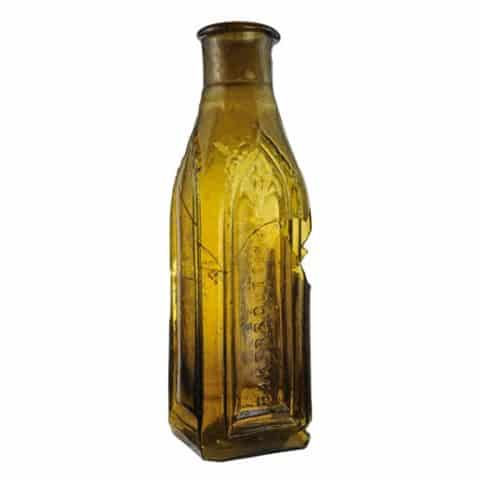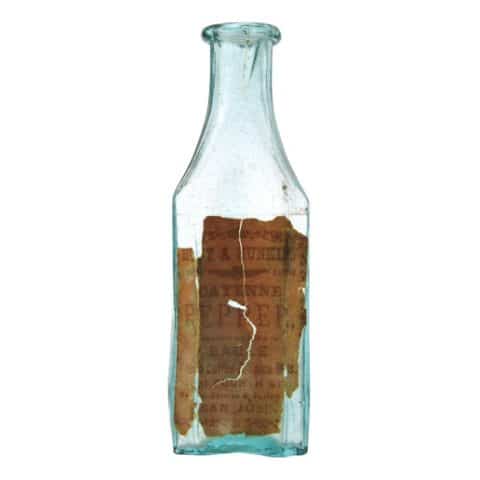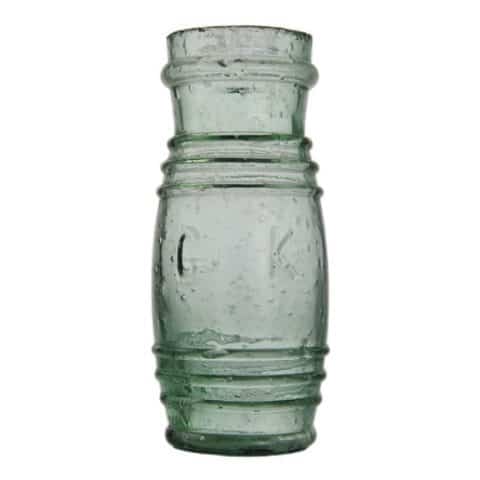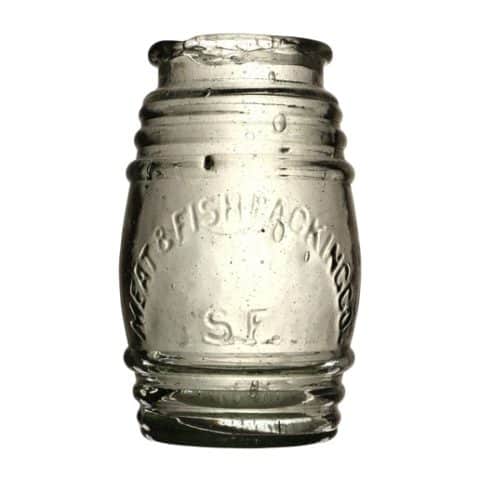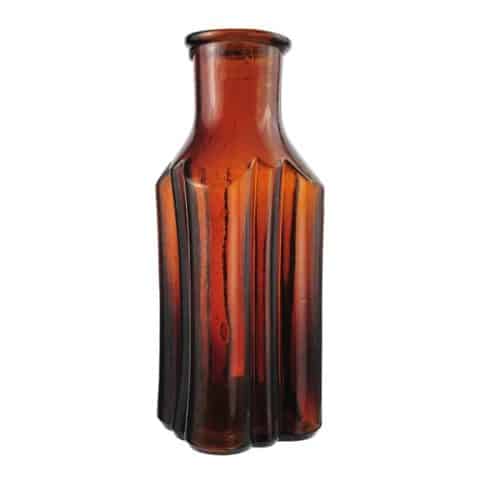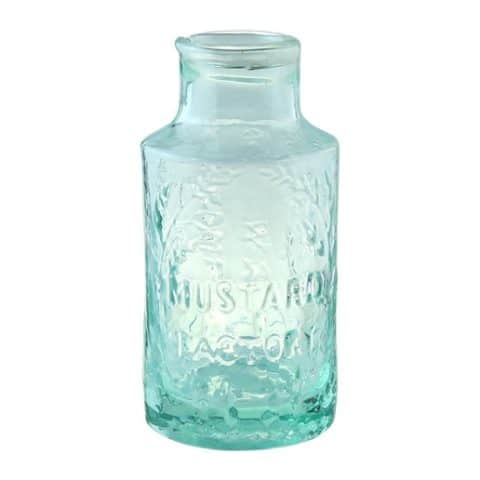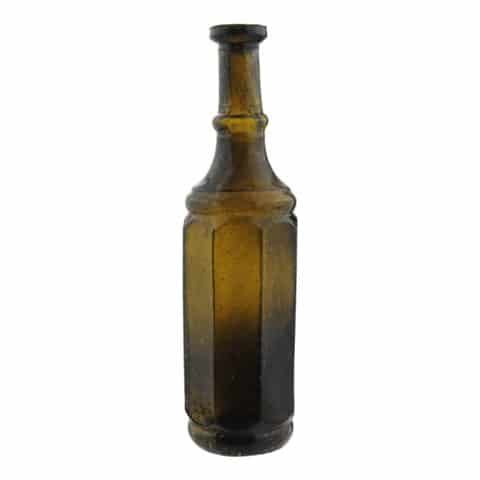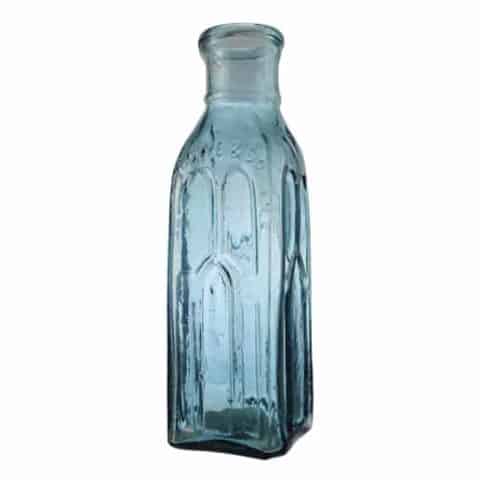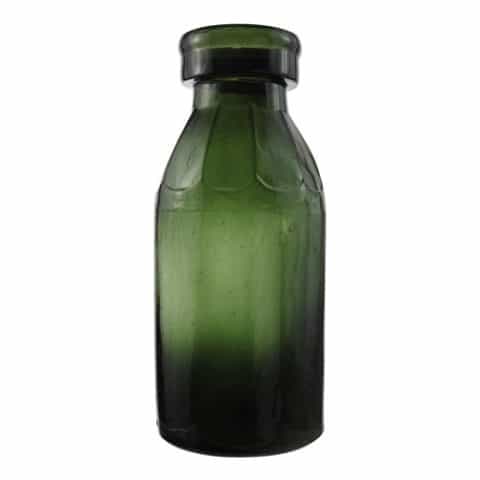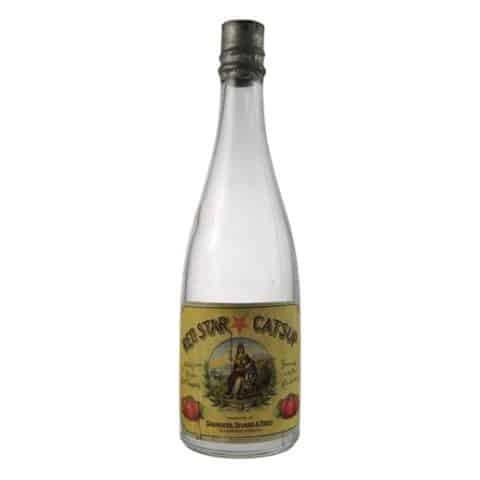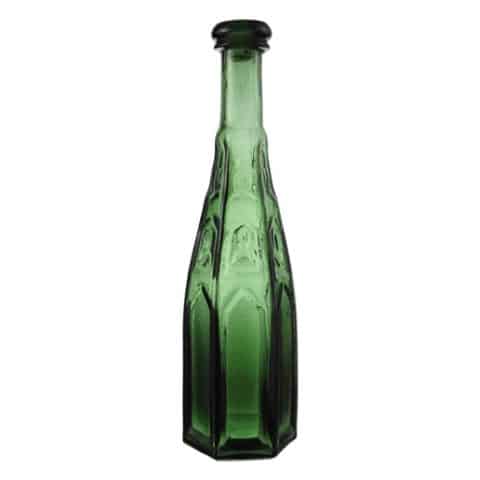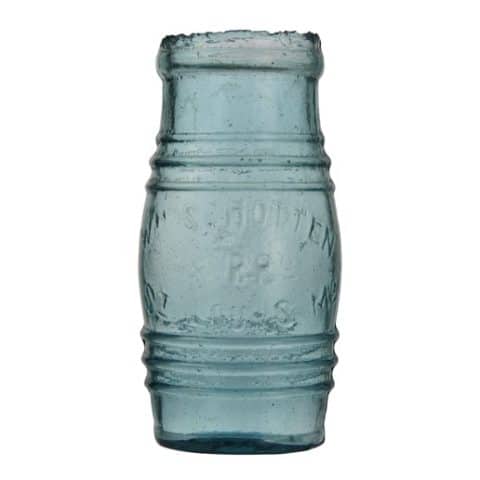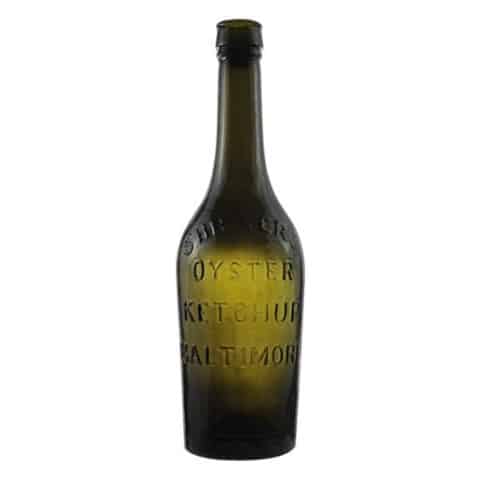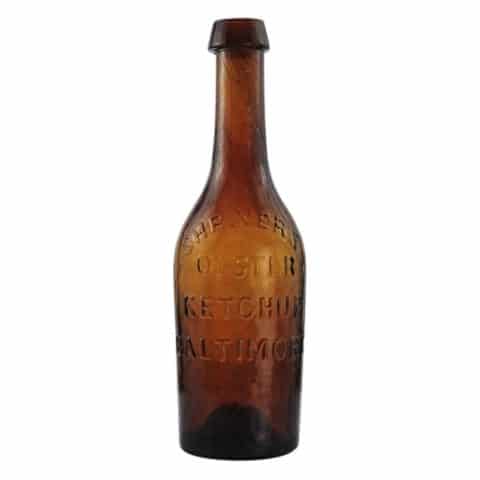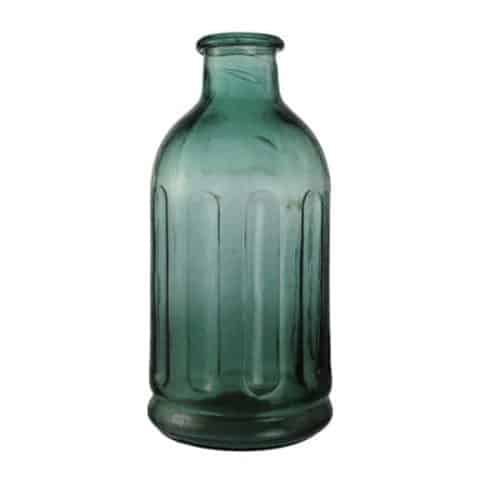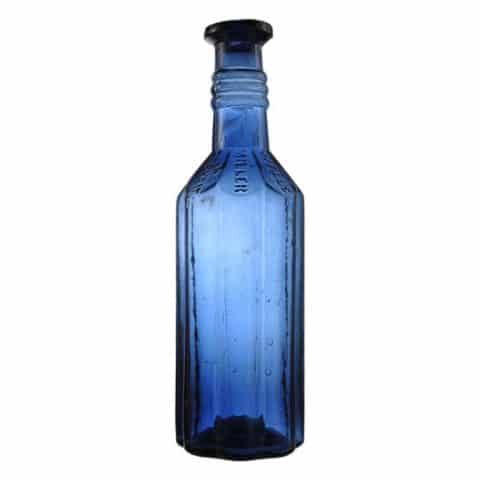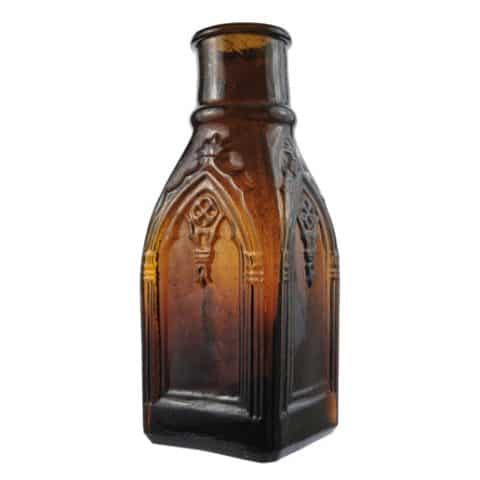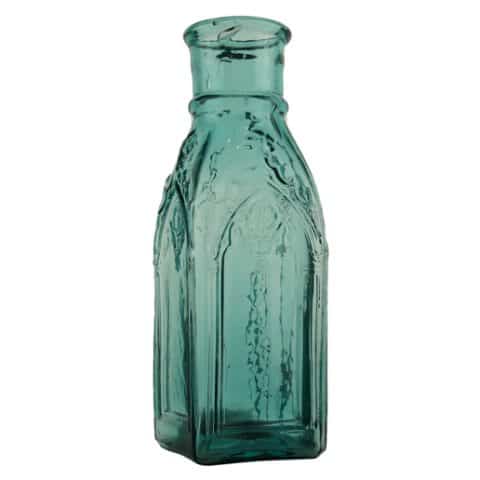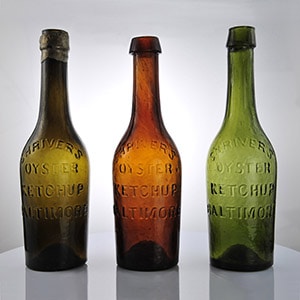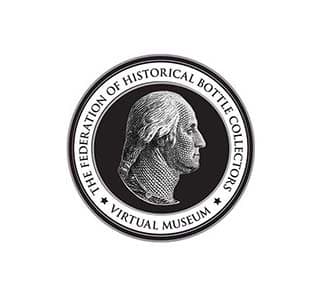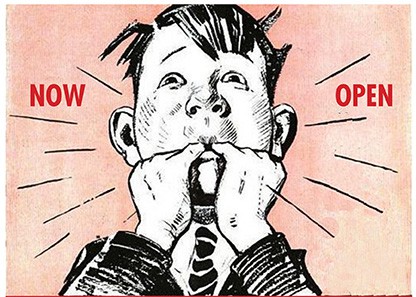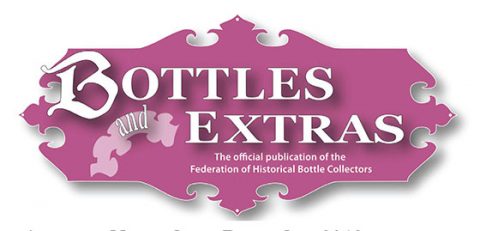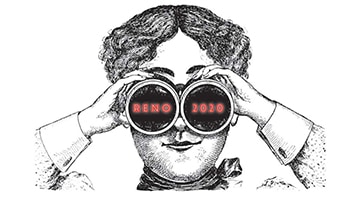Western Spice Mills – Peppersauce
Western Spice Mills
Peppersauce
Western Spice Mills, St. Louis, Missouri
Ferdinand L. Garesché and J. Parker Norris
Citron Square or Gothic Design
Provenance: Lou Pellegrini Collection
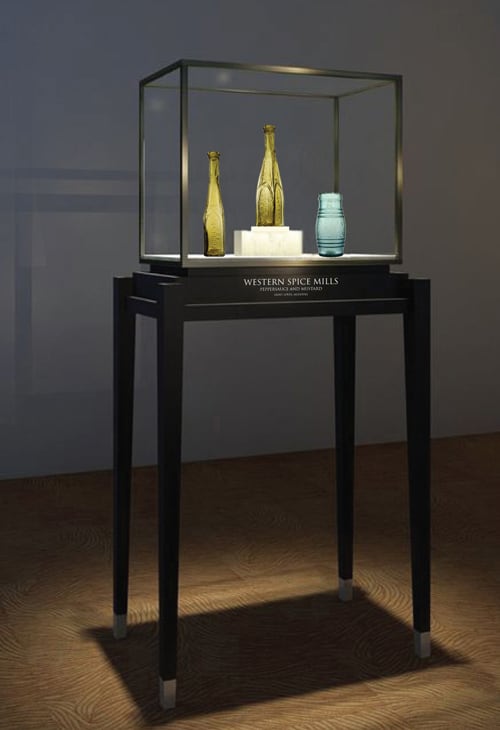
On display in the Food & Sauces Gallery are two early examples of condiment bottles from Western Spice Mills in Saint Louis, Missouri. One is the aquamarine Western Spice Mills barrel mustard and the other is a very crude, citron Western Spice Mills Gothic pepper sauce bottle which is our primary focus here.
Sauces and condiments for foods were marketed as a necessity prior to the food preservation advances of the 20th century. The foods available during the 18th and 19th centuries were often bland, of dubious quality and origin and effective date-stamping did not exist. This led the way for the preparation and use of a wide variety of sauces to either enhance the food flavor or cover up any off-flavors.
Sauce bottles such as pepper sauce, catsup (or ketchup), and club sauces are typically tall and narrow with narrow mouths reflecting their more or less liquid and pourable nature. These somewhat uniquely shaped bottles were probably manufactured by various processes such as free-blown, dip molded, or two or three-piece molded, and would have pontil scarred or smooth bases and date from the 1830s to 1870s era.
See our museum examples of unembossed Gothic Peppersauce bottles.
See our museum example of a Western Spice Mills Mustard.
One of the earliest of the distinctly American bottle styles strongly identified with sauces was the Gothic or “cathedral” design. Glassmakers universally called this style Gothic as in Gothic pepper sauce and the term “cathedral” really does not appear in glassmakers catalogs as this designation is more of a modern era name. These designs originated during the mid-19th century Gothic Revival period in America and Europe which also had its effects on the architecture of the period. This style all share the distinction of having varying sized peaked “church window” like panels on most or all of the sides. We have many early glass Gothic or cathedral pickle containers in our museum.
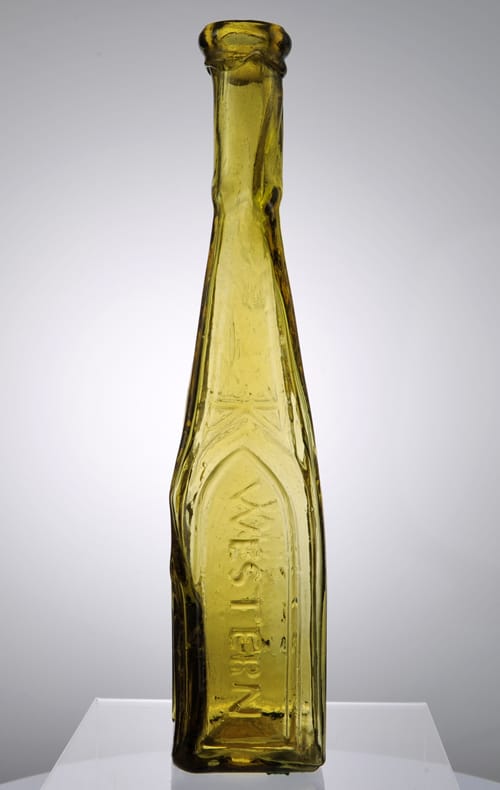
Our museum example of a 9″ x 2″ square citron Western Spice Mills pepper sauce bottle is Gothic in design, has a square but a slightly askew body with narrow chamfered corners, tall tapered shoulders with a lattice motif leading to a slender, plain cylindrical neck with a round collar mouth that was rather sloppily applied. The base is smooth and has a depressed circular area. The four sides are framed sunken plain Gothic arches. Embossed within three of the Gothic windows are the brand words ‘WESTERN,’ ‘SPICE,’ and ‘MILLS.’ The fourth window is blank and is where a paper label would have been placed. The capacity is 7 ounces. The bottle is very rare in shades of yellow and is usually found in aquamarine.

Western Spice Mills
Western Spice Mills centers around J. Parker Norris and Ferdinand L. Garesché who was born near Trinity Church in New York City on December 7, 1827, to Vital and Mimika Bauduy Garesché. In April of 1839, two Garesché families, including young Ferdinand who was 12 years old, departed from Wilmington and headed to Pittsburgh and from there traveled on the steamer Thames, arriving in St. Louis, Missouri on April 30, 1839. Saint Louis in 1839 was a growing city of some 16,000 people. This population had almost tripled since 1830. Vital M. Garesché was the president of the Thames passengers’ committee and published a letter in the Missouri Gazette thanking the captain and stating that there were sixty cabin passengers and one hundred on deck. Vital would die not long after in Cuba in 1844.
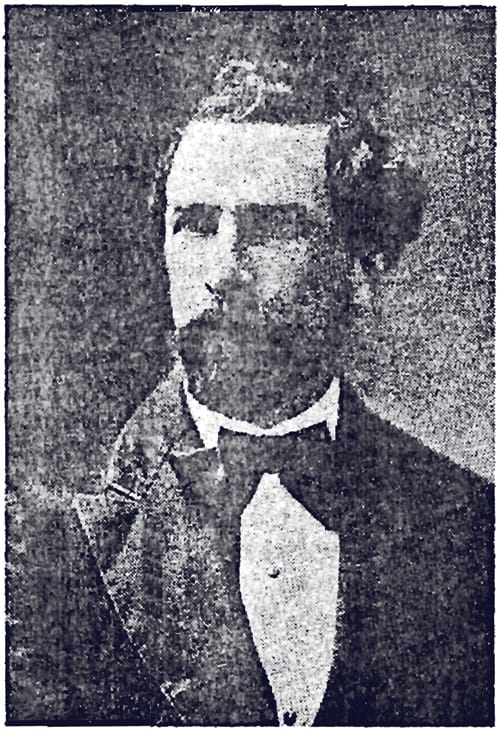
Ferdinand L. Garesché entered St. Louis University and graduated in 1844. He was a clerk in the store of Chouteau & Valle after finishing his graduation and was an enthusiastic volunteer fireman and member of the famous “Greyhound” company. His circa 1848 painted leather parade hat survived all these years.
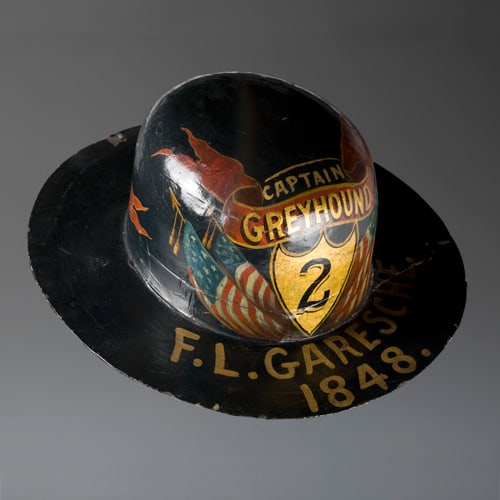
In 1855, Garesché married Rosella Marie Hicks and founded Western Spice Mills with his brother-in-law Joseph Parker Norris. Joseph was born on January 27, 1826, in Pennsylvania, and was from a distinguished Philadelphia family since before the Revolution, one of them having been designated by William Penn to take his place after his death. The coffee and spice mills were located on 7th Street between Graüot and Chouteau, with an office at 88 N. 2nd Street.

When the Civil War broke out, Ferdinand joined the Missouri Guards and was taken prisoner at the surrender of Camp Jackson. In 1864, Western Spice Mills was being run by Garesché, Hicks & Co. who was comprised of Ferdinand L. Garesché and Charles W. Francis. The Hicks was probably Charles Hicks who was the brother of his wife. The proprietors were now addressed at south 7th between Gratiot and Papin. By 1867, there was another change in partnership as the directory for that year read, “Western Spice Mills, Woodward & Garesche, proprietors (Tyrone J. Woodward and Ferdinand L. Garesché) s. 7th bet. Gratiot and Chouteau Avenue. Wholesale dealers in teas, coffees, spices, etc. 414 n. 2nd. This partnership would continue into the early 1870s.
In 1874, Ferdinand L. Garesché was elected Clerk of the St. Louis County Court on the Democratic ticket and served until the city was incorporated under its present Charter. He was then appointed by Mayor Overstolz as the first Commissioner of Supplies. He held that position for seven years and then went into the fire insurance business. Garesché held other important positions such as Surveyor of the Port and was involved with Edison Illuminating Company and other electric-light concerns of the city. He would die on May 16, 1903, at the age of 75 in St. Louis City, Missouri.
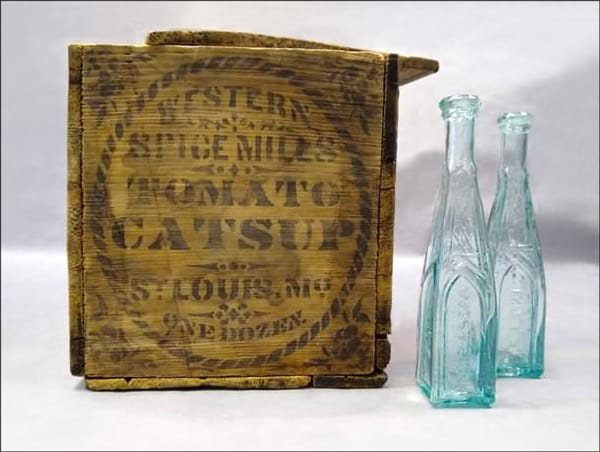
Primary Image: Citron Western Spice Mills peppersauce bottle imaged by the FOHBC Virtual Museum west coast studio by Gina Pellegrini.
Support: Reference to Ketchup Pickles Sauces – 19th Century Food in Glass by Betty Zumwalt
Support: Reference to The Garesché, De Bauduy, and Des Chapelles Families: History and Genealogy by Dorothy Garesché Holland, Saint Louis, Schneider Printing Company, 1963
Support Images: Auction Lot 65: “Western / Spice / Mills” Cathedral Peppersauce Bottle, America, 1860-1870. Square with rounded corners and fancy cathedral arches, brilliant yellow with an olive tone, applied double collared mouth – smooth base, ht. 8 ½ inches; (faint ½ inch fissure from impurities in shoulder). Z pg. 435 An extremely rare bottle in a stunning color with loads of glass character. Generally fine condition. Dr. Charles and Jane Aprill collection. – Norman Heckler, Norman C. Heckler & Company
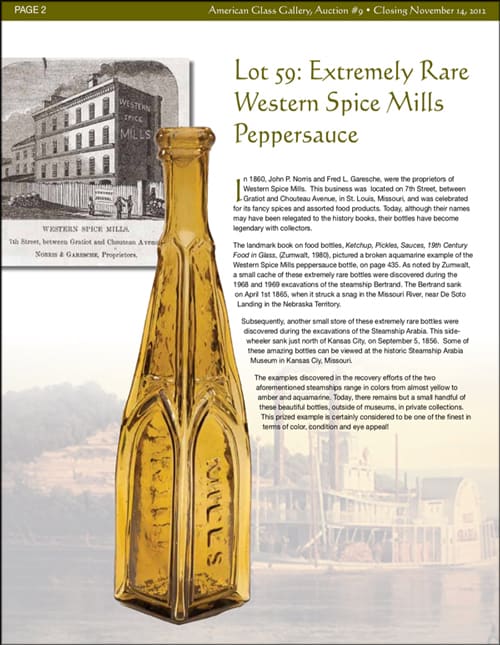
Support Images: Auction Lot 59: “Western – Spice – Mills” Cathedral Peppersauce Bottle, America, 1860 – 1870. Brilliant yellow with a slight honey or topaz tone in the base and corners, square with arched gothic panels and a diamond pattern in the upper windows, applied round collared mouth with lower bevel – smooth base, ht. 8 ¾”, attic mint! Ex. Dr. Burton Spiller, Sandor Fuss collections. The color is intense, vivid, and spectacular! Considered by many to be the finest peppersauce bottle known. – John Pastor, American Glass Gallery, Auction #9
Support Image: Fireman’s painted leather parade hat worn by F. L. Garesché, Captain of Union Fire Company No. 2, 1848. Missouri History Museum.

